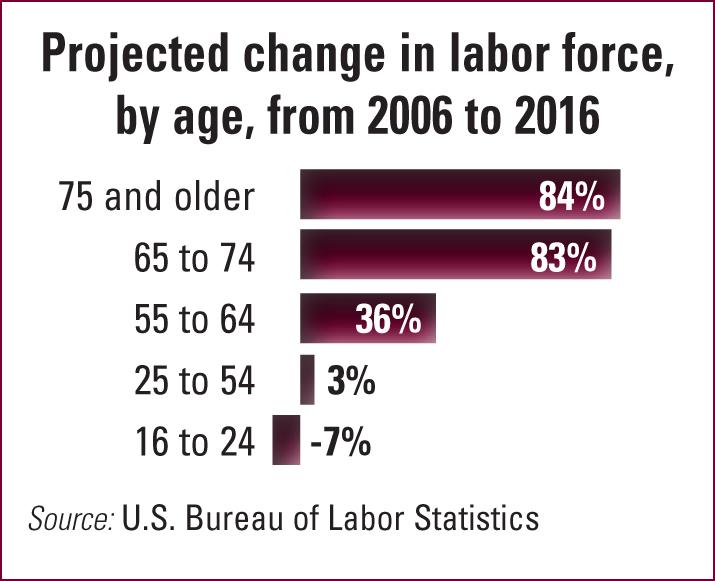As boomers get older, age-bias claims spike: Avoid trouble by heeding new DOL guidance
THE LAW: The Age Discrimination in Employment Act (ADEA) protects workers age 40 or older from discrimination because of their age.
Plus, the ADA prohibits employers from discriminating against a qualified individual with a disability as long as the individual can perform the job’s essential functions with or without a reasonable accommodation.
WHAT’S NEW: What’s new is what’s old—specifically the American workforce. Many baby boomers are delaying retirements due to the demise of pensions and depleted retirement plans. Also, as boomers age, they’ll have a greater need for reasonable accommodations to cope with disabilities.
The U.S. Department of Labor’s Office of Disability Employment Policy (ODEP) just unveiled a study, Employer Strategies for Responding to an Aging Workforce. (Download it here.)
It points out that more than 40% of people age 55 or older are still working—an all-time high.

HOW TO COMPLY: The study urges employers to follow these strategies to avoid age discrimination complaints:
1. Data collection policies. Don’t collect information about employees’ ages or stereotype employees based on age.
2. Job descriptions and evaluations. Carefully craft specific job descriptions and include measurable expectations for every position. Employees should be evaluated at regular intervals and the results should be well documented.
3. Layoffs, terminations and promotions. Such decisions should be based on objective evidence. Employers contemplating a layoff should evaluate its impact on protected groups, including older workers. Employers should periodically collect and analyze data regarding the impact of employment conditions on workers of all ages.
4. Compensation and benefits: Employers should be aware of salary differentials between older and younger workers, and ensure that the relatively higher pay some older workers may earn isn’t held against them when making retention decisions.
5. Employment decisions based on subjective criteria: Employers should maintain accurate and comprehensive records of factors considered in the decision-making process. Employers may need to provide such records as proof that the factor was justified—that is, not age-related.
6. Retirement. You must walk a fine line here. An employer that appears to suggest that an older worker retire may be violating the ADEA.
The study suggests employers openly discuss retirement options—such as phased retirement—to allow employees to deal with family or health issues. The key is to discuss options, but not push the employee toward any particular choice.
The big mistake employers often make is in assuming older workers are not interested in acquiring new skills. Such assumptions may be interpreted as prejudice. The study also points out that the most successful employers keep older workers engaged by giving them new challenges.
By focusing on skill sets, not age, employers demonstrate an age-blind focus on the bottom line.





